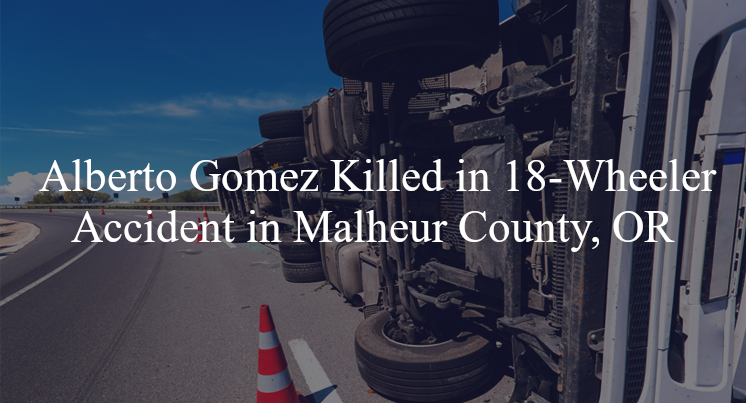Alberto Gomez Killed in 18-Wheeler Accident in Malheur County, OR
Malheur County, OR — July 8, 2025, One person was killed following an 18-wheeler accident that occurred at around 12:31 P.M. on Hwy. 20.

According to reports, an 18-wheeler operated by Alberto Gomez was traveling on Highway 20 near milepost 220 when veered off the road, over-corrected, and rolled over.
When first responders arrived on the scene they found Gomez fatally injured and he was pronounced deceased. No other vehicles were involved in the crash, and the cause of the accident is under investigation.
Commentary
When an 18-wheeler veers off the road and overturns with no other vehicles involved, people often assume the driver simply made a mistake. But from experience, I know that these kinds of crashes almost always have deeper causes that deserve a closer look. A truck that leaves the roadway, overcorrects, and rolls over doesn’t just do that on its own—something set that chain of events in motion.
According to reports, the truck veered off Highway 20, the driver attempted to recover, and the rig rolled. That sequence—leaving the road, overcorrecting, then overturning—is a common pattern in single-vehicle truck crashes. But the real question is: why did the truck leave the road in the first place?
That’s an unanswered question that can’t be ignored. Was the driver fatigued or distracted? Did he experience a medical emergency? Was the truck pushed off-course by a mechanical failure—like a tire blowout or steering issue? Any one of those possibilities could turn a routine drive into a fatal event, and only a thorough investigation will reveal the truth.
It’s also worth noting that overcorrection is often a sign that the driver was trying to regain control in a high-pressure situation. In many cases I’ve handled, that kind of maneuver isn’t just a reflex—it’s a last-ditch effort to avoid something unexpected. That’s why evidence from the truck’s ECM (black box), along with dash cams and in-cab video, can make a huge difference. They show what the truck was doing before and after it left the road—its speed, braking, steering input, and whether the driver reacted to something outside the frame.
Another angle that has to be considered is whether the truck was properly loaded and balanced. A shifting or top-heavy load can cause a trailer to tip, especially when a driver makes a sudden correction. And if the cargo wasn’t secured properly, that could point to errors at the loading dock, not just in the cab.
The fact that no other vehicles were involved doesn’t make this any less serious. If anything, it means we have to work even harder to figure out what happened—because the only eyewitness who could explain the truck’s movements is no longer here.
Key Takeaways:
- It's not clear why the truck left the road; possible causes include driver fatigue, distraction, mechanical failure, or a medical issue.
- Overcorrection followed by rollover is a common pattern that often points to deeper problems like load instability or sudden road events.
- ECM data, dash cams, and load records will be essential to understanding the cause.
- Even in single-vehicle crashes, liability may extend beyond the driver—to maintenance crews, loading personnel, or company policies.
- A full investigation is needed to determine not just what happened, but whether it could have—and should have—been prevented.

“These are essential reads for anyone dealing with the aftermath of a truck wreck”– Attorney Cory Carlson